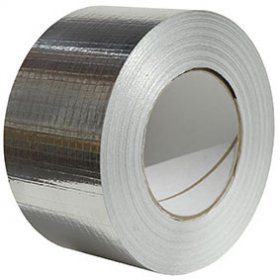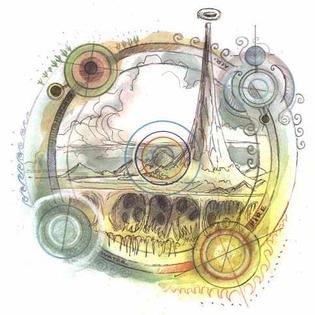I wonder how these hold up in fires.
I’ve seen hay bales catch fire from being too wet, no way I’m building a house out of that.
Yeah, same as wood, who would build houses out of that? /s
Hay is great insulation and it’s sealed with protective material anyway in modern houses. Also, even if not: Some tribes make houses out of hay or straw and those houses are quite great in their particular circumstances. There are experiments to use hay bales for structural support as well and it holds up surprisingly well.
Also, fun fact: wooden houses are less dangerous in case of fire than houses made of steel and concrete because the steel rod reinforcements start becoming soft at low temperatures (~200°C) and crash. Wooden houses announce crashing when burning, concrete buildings don’t.
Something something jet fuel…
I knew it!
How does that work? Too wet with kerosene?
The moisture and organic material causes mold and bacteria to form and create heat. Because hay is a good insulator, heat will build up more and more. Once the hay gets to a certain temperature flammable gases are formed and can combust from the heat.
And as the heat raises, it becomes perfect for other bacterias, which start to multiply too, increasing more the heat
Sun goes through droplet of water. Focuses beam. Burns the highly flammable straw.
Straw is compressed in the walls, so not to let oxygen go through, and it doesn’t get wet as the wall is covered with clay inside and outside.
But the moisture content of the straw matters BEFORE it gets sealed. A stack of a thousand damp bales can heat and combust. And it’s the interior damp bales that heat and start the fire.
They can get wet waiting for transport to the jobsite, they can get wet during transportation, and they can get wet during building.
I’m not saying a strawbale house can’t be well built, but it’s not a “one size fits all” solution for every location.
Yes, of course it has to be dry.
And that is the trick isn’t it. A piece of wood gets rained on, it isn’t effected much if at all. When the sun comes out, it dries in less than an hour. But bales are much like sponges, they soak up water easily and dry out very, very, very slowly.
Just how much do you try the average construction crew to keep those bales dry on a job site?
Well your average construction crew doesn’t build straw bale houses. The three I worked on it was a thing of real concern. We keep the bails covered before they were stacked. We would let the pile breathe during the day and cover at night. We would only stack a wall when we knew it would get finished and have the top cover on before the end of the day. And the exterior was sealed very early where the interior sealing was one of the last things to happen.
The point is the, the “average” construction crews build the vast majority of structures around the world. And you are correct - they aren’t qualified.
Building clay-and-straw houses is not suitable for mass construction, I guess.
You could say you need to live on the site :)
It is on par with building a ground up stick house. Sure it doesn’t beat any kind of prefab or cook cutter houses. But neither does any other method.
No they probably aren’t suitable for mass use. But, for one-offs they can be viable choices if you get a high quality contractor and construction crew that knows what is needed to build the structure correctly.
Better than wooden houses. source
So flammable mater + low airflow is somehow more fire resistant than flame resistant mater + low airflow? Looks like the source is pure marketing unless their comparable insulation is perforated cardboard coated in fuel gel.
Roof/attic often uses rockwool or glasswool. Wall insulation is often something like XPS, PIR or PUR.
Although it sounds counterintuitive, I can see straw doused in flame retardant being better than supposedly flame retardant polystyrene foam made from hydrocarbons. I mean, just look at what happened with Grenfell Tower.
flame removedant
lemmy.ml is replacing some of your word with another one. Good ol’ Scunthorpe problem!
deleted by creator
“doused in flame retardant” isn’t mentioned in the source as far as I saw, plus it would affect the eco-friendly, workability, cost effectiveness, and biodegradability benefits mentioned (though the last one is worthy of debate as a pro or con in the first place). Everything has its tradeoffs unfortunately. This could be the better side for some surely.
From what I have read they are using a loam layer on both sides of the wall, I doubt that this affects eco-friendliness and biodegradability. And they are F90 certificated. source
From the article…
Since straw bales are tightly packed, they do not burn as easily as certain other materials. The tight packing reduces airflow, something that is critical to sustain a fire. While there is some fire risk during the construction phase (as is the case with many building materials), once the home is finished, it’s flame retardant nature decreases the risk, usually resulting in a home that better resists burning than a traditional stick built house.
“…better than a traditional stick built house”
I’m thinking of brick, what do we think folks? Seems like we have three possible building materials with one clear winner amirite?
Only the big bad wolf can help us decide
I don’t see how brick is the “one clear winner”.
A straw and clay house is better insulated and you need no cement. It has pros and cons.
Try taking out Big Bad Wolf insurance in a stick house bud
I live in center Europe, here people don’t insure houses.
“nothing goes over my head, my reflexes are too fast” -Kilgore Trout
Well hemp bricks hold up well so I am guessing they improved upon this too to be more fire retardant
Man I’d love a hemp brick house.
I wonder how these hold up in fires.
Only sell to non-smokers.
If it’s treated with a fire retardant like sodium borate, pretty well. They use the same chemical for cellulose (shredded newspaper) insulation.
I built my own strawblae house and have worked on half a dozen others. I have designed 3 award winning homes, one of them was strawbale.
Mice aren’t a problem, the walls are sealed with clay (inside) and lime (outside) render, the mice can’t get in.
Same with fire, the straw is tight and sealed, they don’t burn. In huge bushfires in southern Australia a few years back, several families sheltered I a strawbale home as the fire passed.
Moisture not a problem if you have proper eaves and footings, which you will cos you design it properly, right?
Loads of massive benefits over brick or stick built.
I have no data on wolves sorry, but definitely dropbear proof
Happy to answer any questions.
My biggest question is: why?
If it’s safe from mice, bugs, and fire, then it just seems like the housing equivalent of wearing a boot on your head. You can do it. It’s not hurting you or anyone around you. But it’s kinda just weird. Is there some sort of benefits to this over a normal house? Or is it just a boot on your head?
deleted by creator
Also incredibly good insulation.
The next benefit is, that concrete has a very bad CO2 footprint. Straw as an organic renewable resource has a very good CO2 footprint.
deleted by creator
Pros: Cheap, good insulator, doesn’t require any experience to install, local, low environmental footprint.
Cons: Thick, does not handle moisture well at all so it must be completely sealed. A small leak will ruin all the hay in the exposed area and, with a bit of airflow, can spontaneously combust. More likely, though, is that it just degrades rapidly. Like a lot of things, good planning can keep you fine.
A plan that requires everything to work perfectly is a bad plan.
deleted by creator
deleted by creator
deleted by creator
deleted by creator
deleted by creator
Du hast das 10 mal pfostiert. Server machen server Dinge.
Hatte zig Socket timeouts. Hat Dan wohl jedes mal trotzdem postiert.
If you’re going to seal it, why not just use mud, clay or whatever ground/dirt instead? Probably won’t need to be as thick to give similar insulation.
Also, what about impact resistance? Can an angry punch break that outer lime layer?
What’s the tallest one of these buildings can get?
Well, because straight earth as in mudbrick (or concrete, normal bricks etc) is not insulation. That’s thermal mass. It stores energy. Insulation (like strawbales) slows heat movement. So you need insulation on the exterior and thermal mass on the interior for a properly thermally regulated building.
At 2 inches thick of limestone, you can sure bust it up with a sledgehammer or similar. A punch won’t do much more than hurt your hand. Still, if you take tools to the majority of homes they break quite fast.
Couldn’t say houw tall they can get but from memory I think I’ve seen 3 stories? Over that you’re talking more full on construction. I’ve seen a 4 story using super bales that was in an commercial carpentry shop
Straw bale houses can be made really well, and are ecologically superior building material. I’ve seen some straw bale houses that are fancy af
Straw bale houses are awesome and have been around for centuries
Just a little problem with an the mice
Cat
Cat.
deleted by creator
We eat strew, but hay is much better.
hay hay hay
hay hay hay
I’m a cow with a vow
The vow is to eat as much as I can fit
hay hay hay
The straw is sealed inside and outside with clay.
Structurally timber. Checkmate wolves.
(Yes I know the story.)
I’m already in your house 🐺😋
Grandma?
Just put bricks on the outside and you’ve got a wolf-proof house
If they’re affordable, I’ll take one.
Mmm sorry, Citadel just bought them all, but you can rent one for 85% of your wage.
Unfortunately in France you won’t be able to rent for more than 33% of your wage. Sorry, you’ll be homeless instead.
If they cant find houses let them stay in barns
Big Bad Wolf was propaganda by Big Cinder.
Learn history or be doomed to repeat it
deleted by creator
















